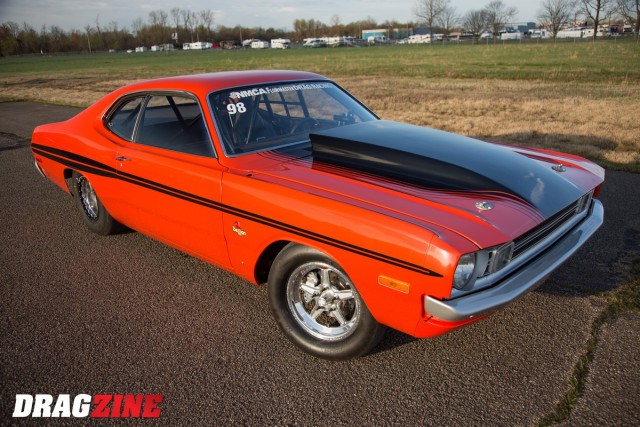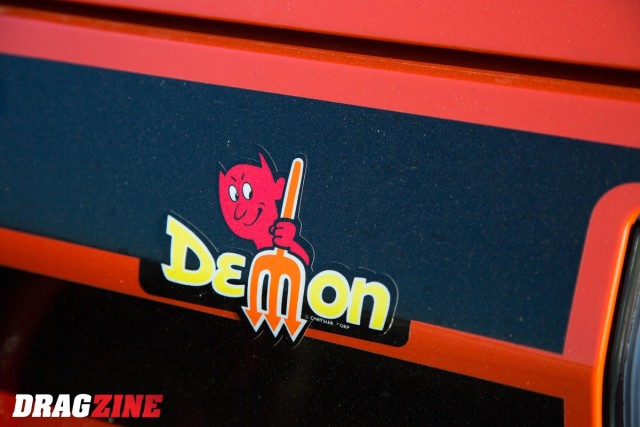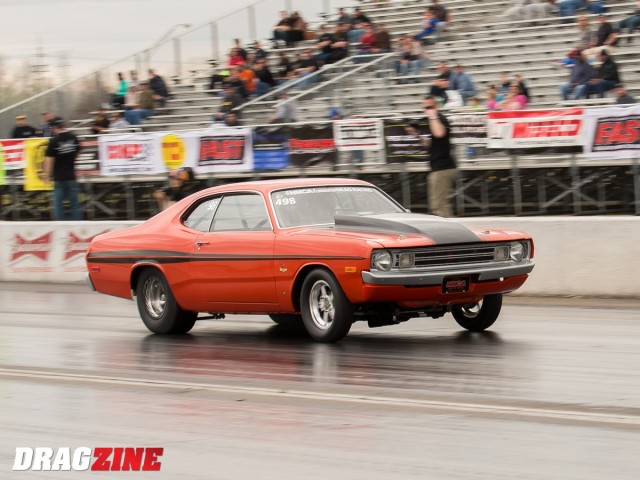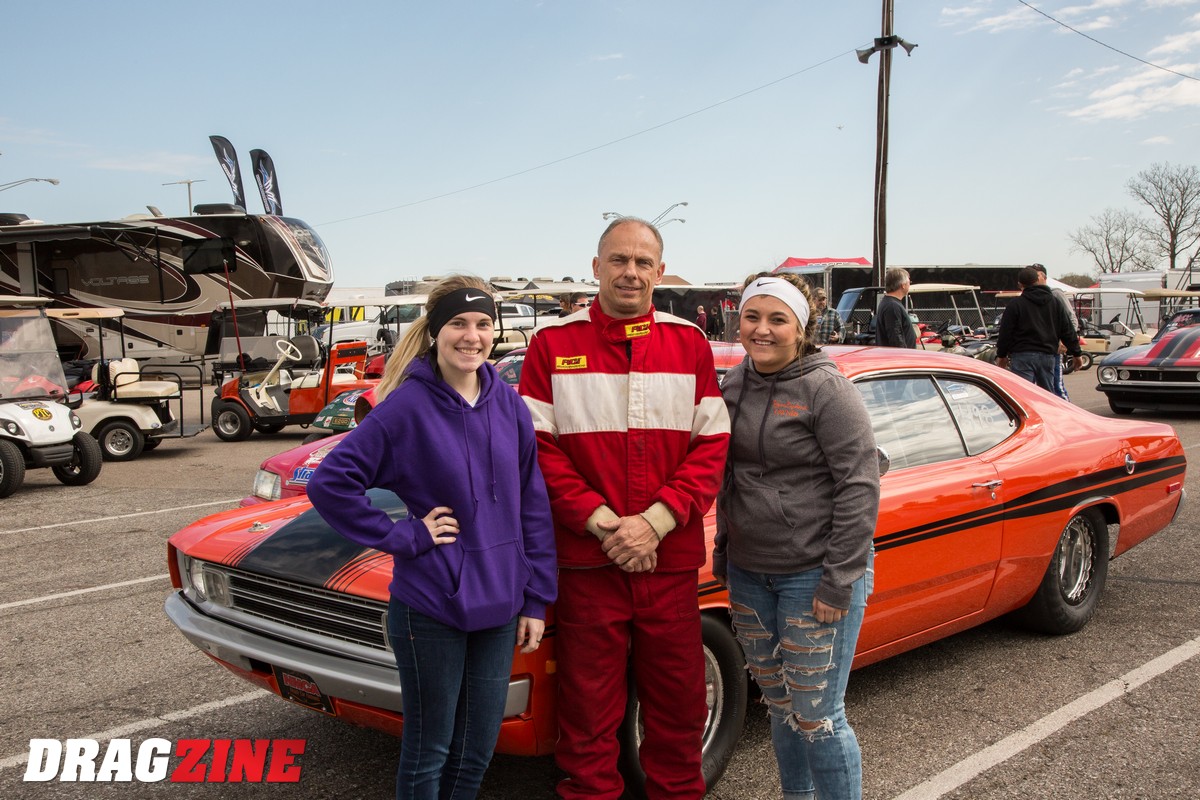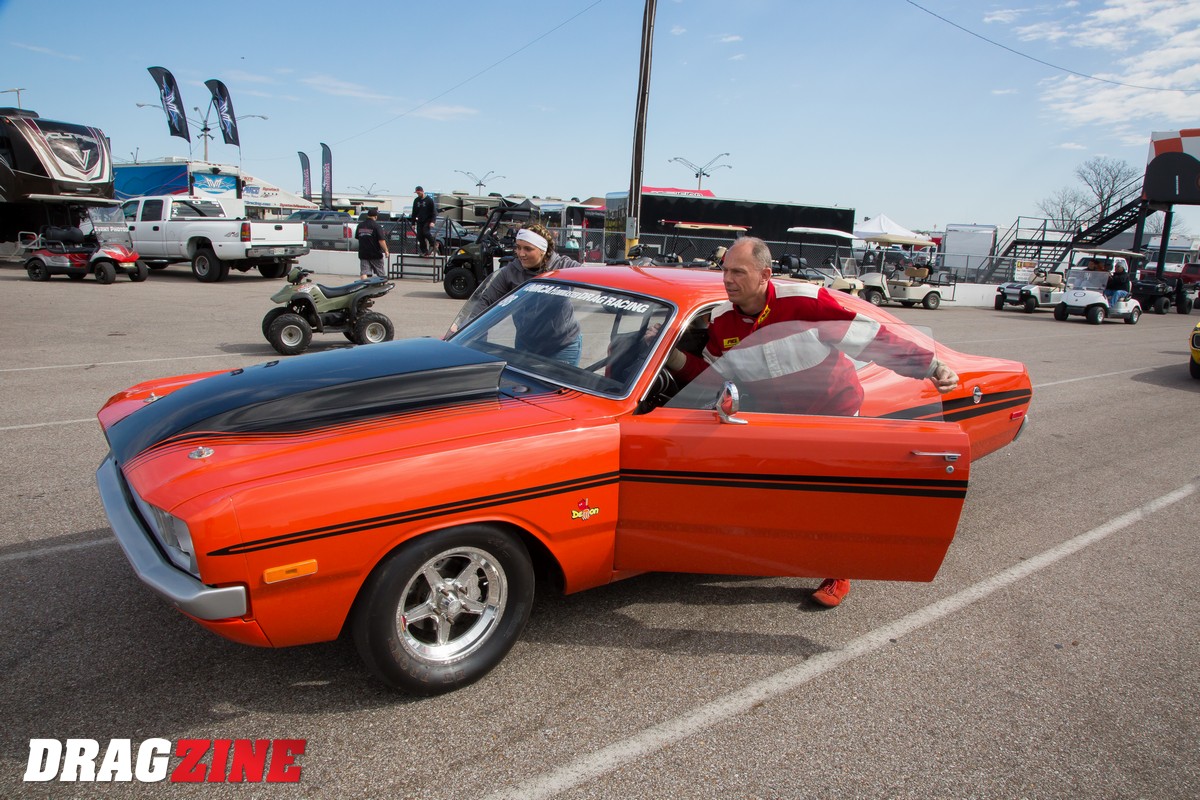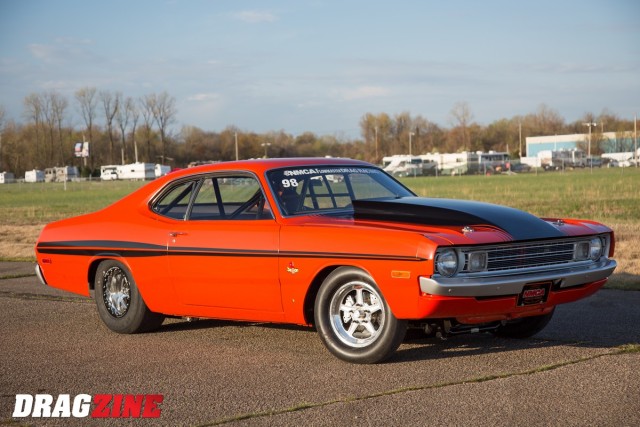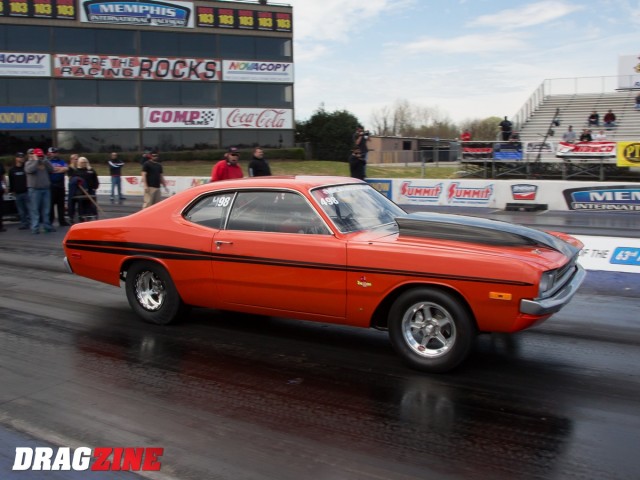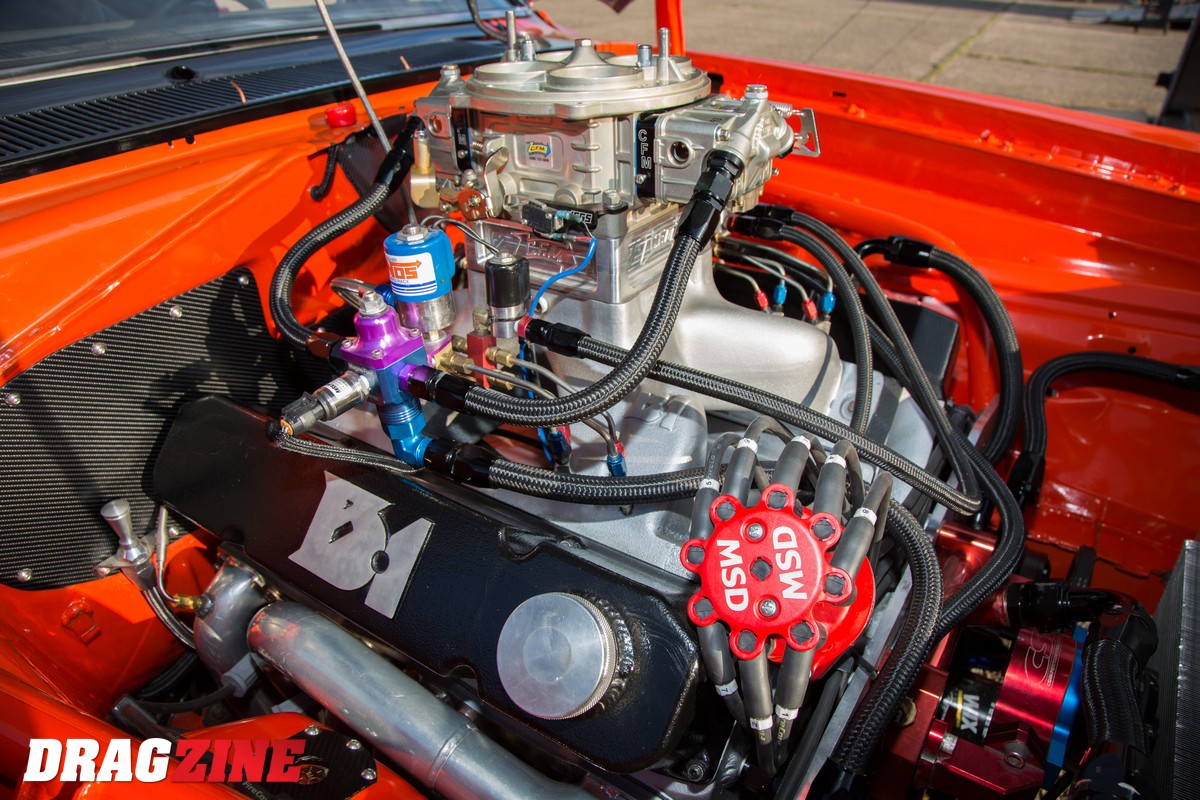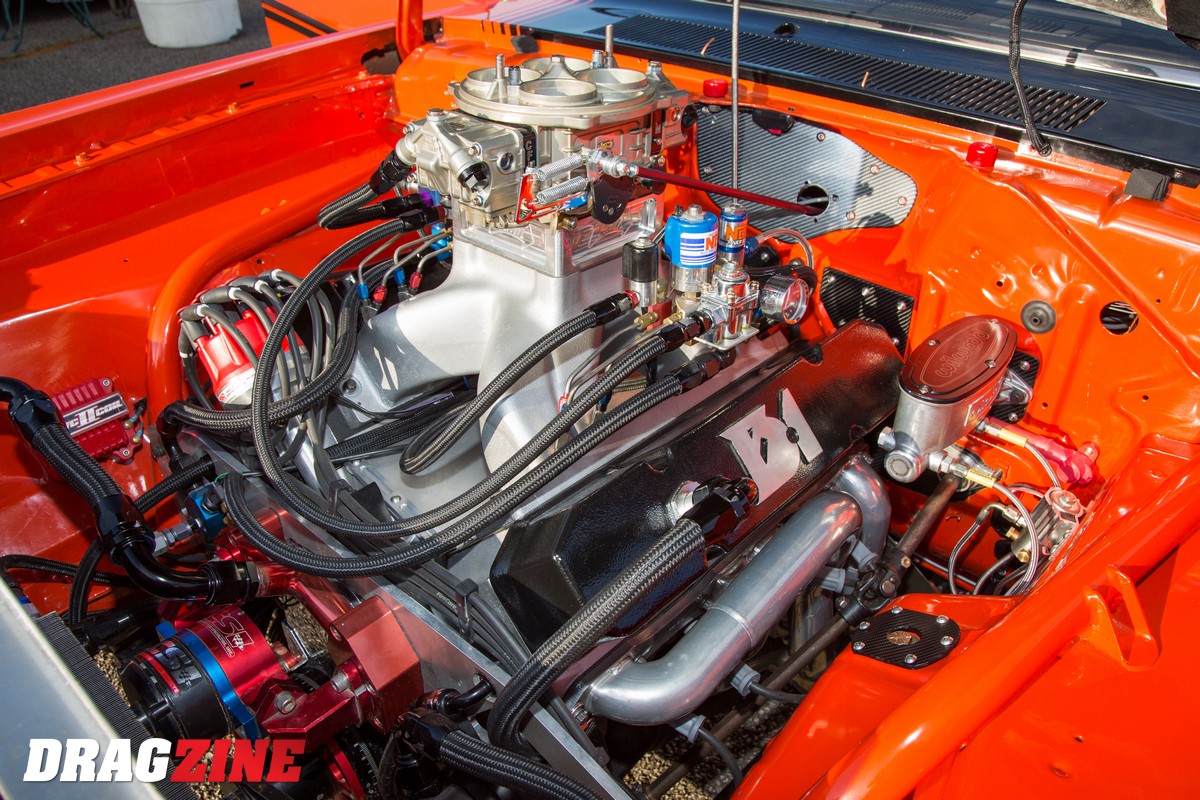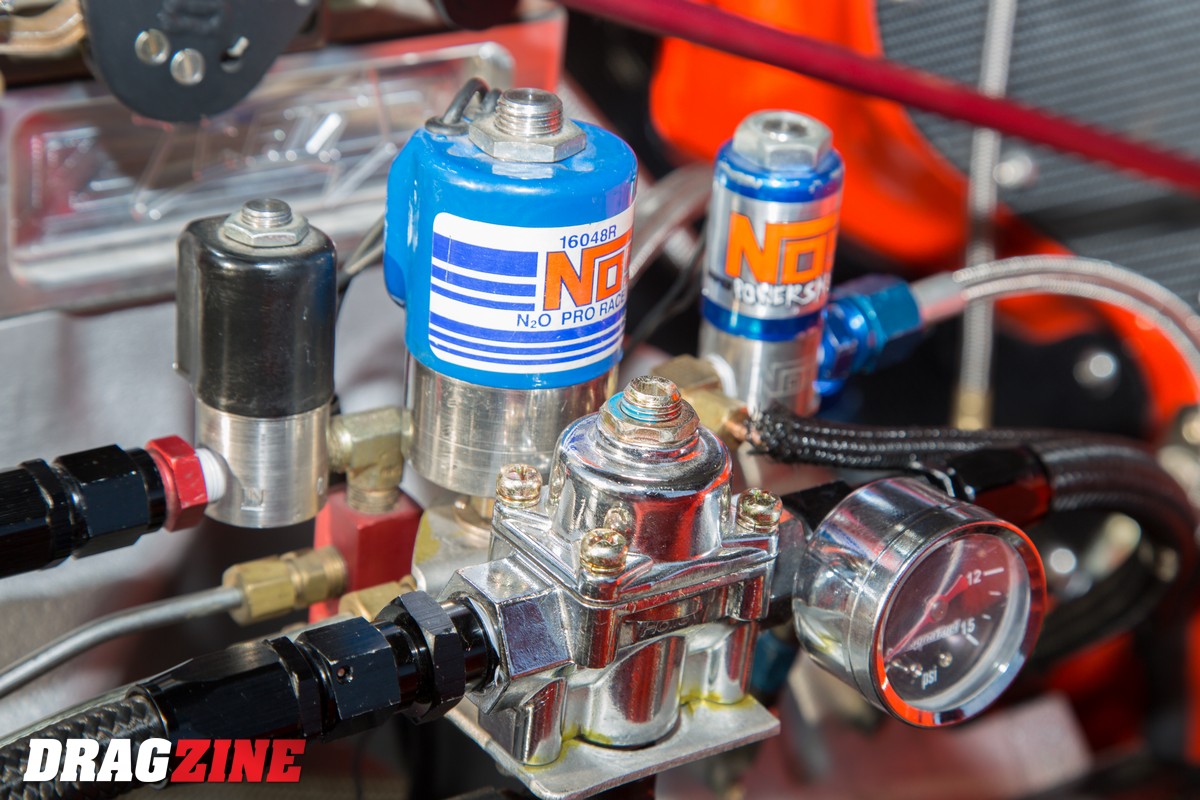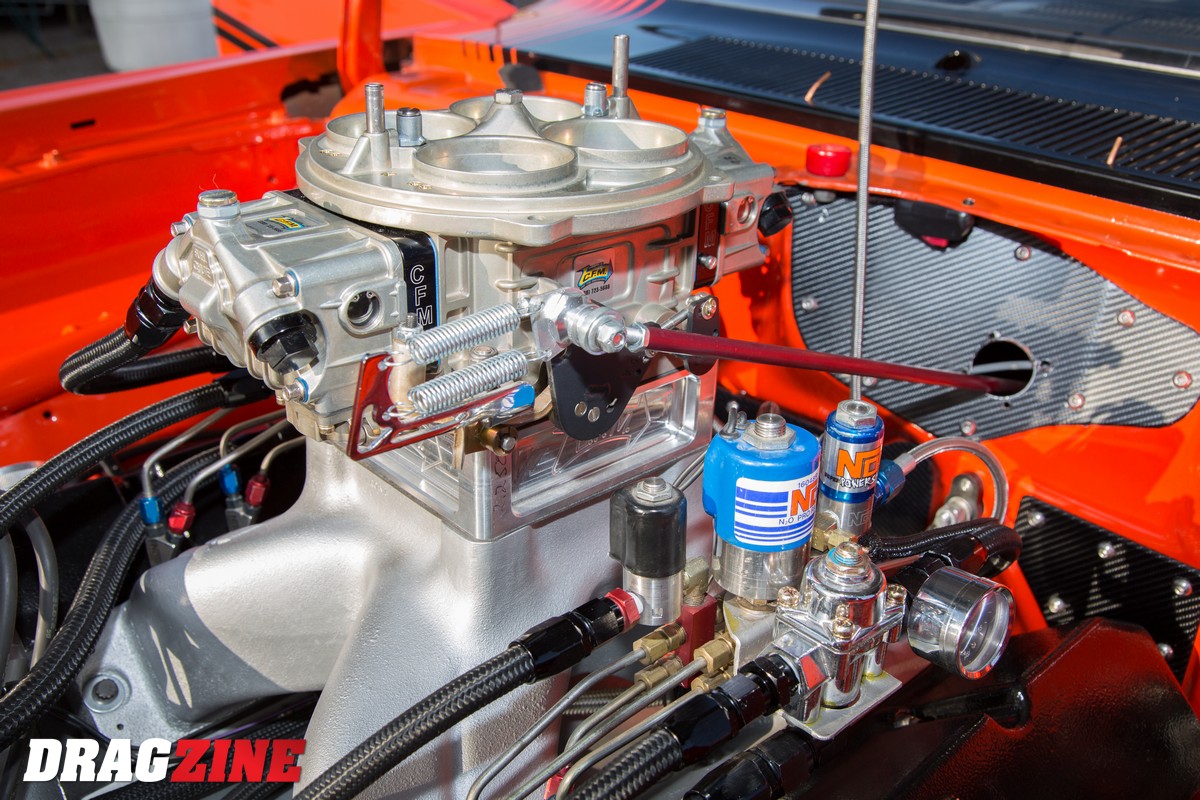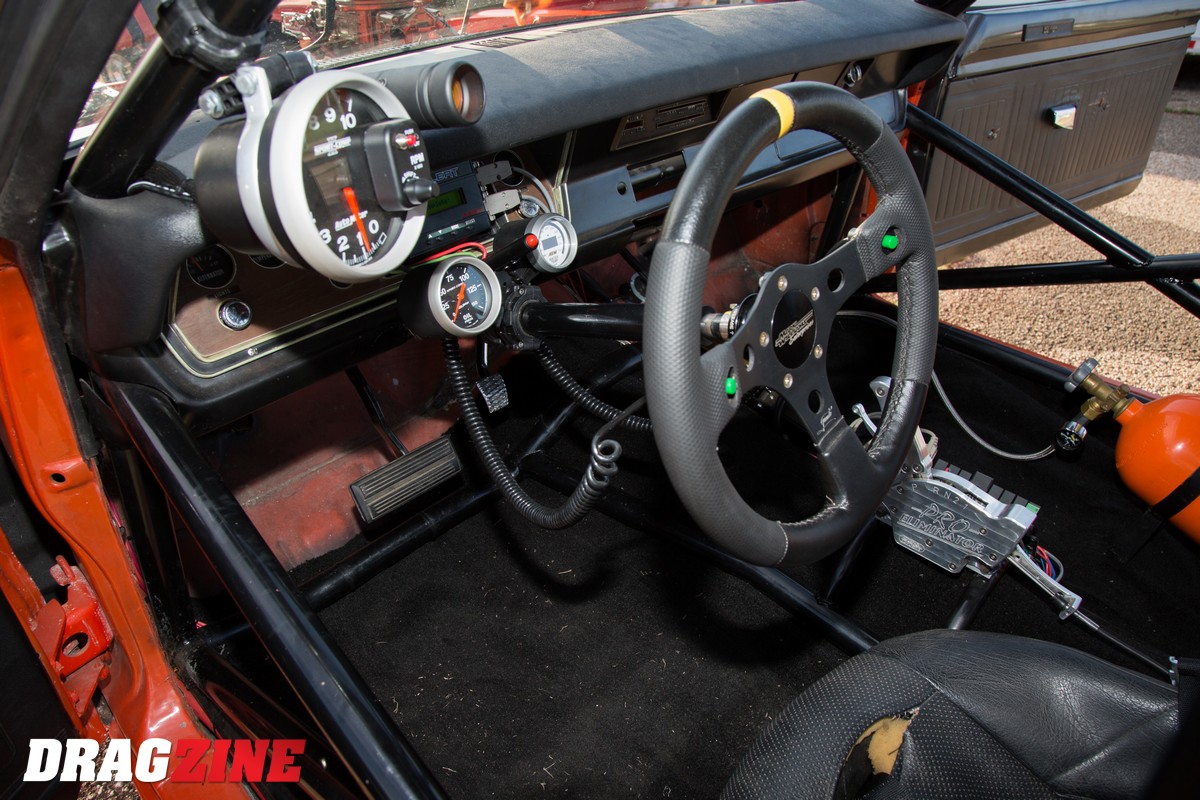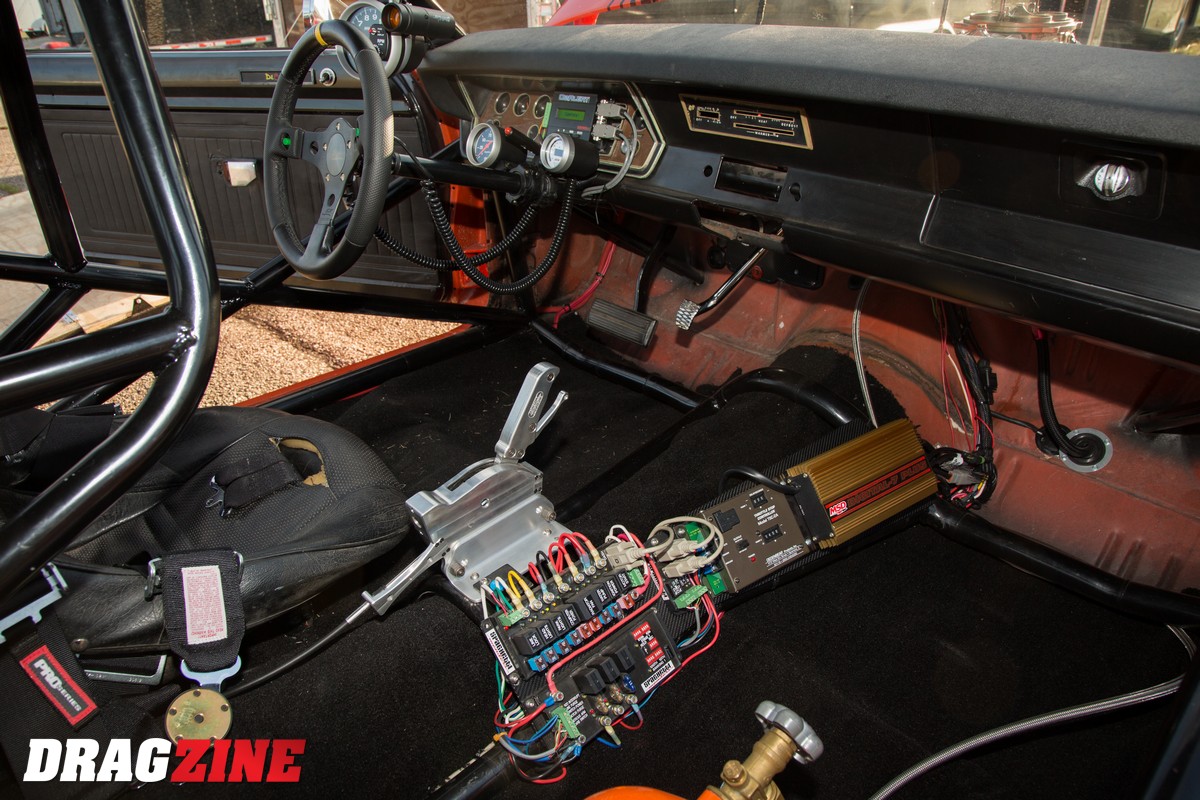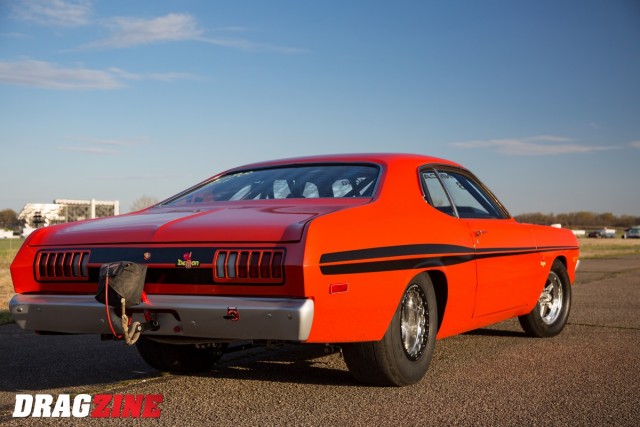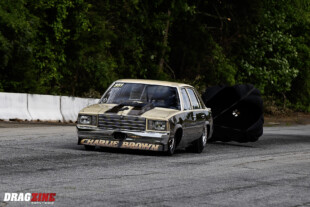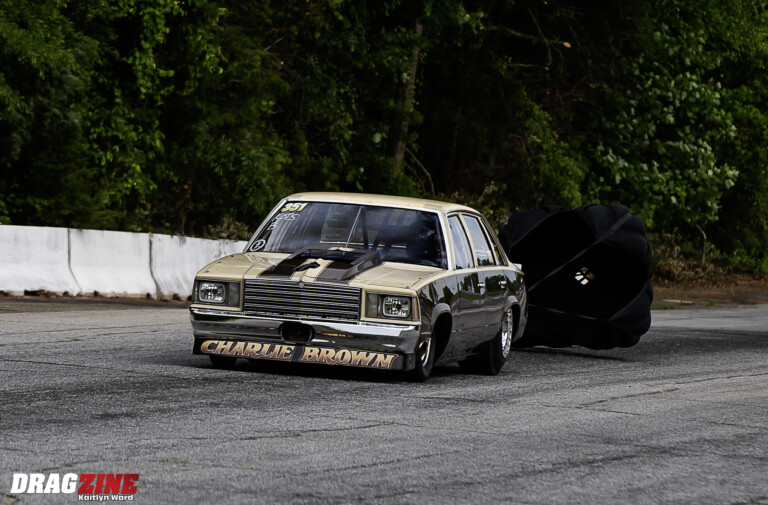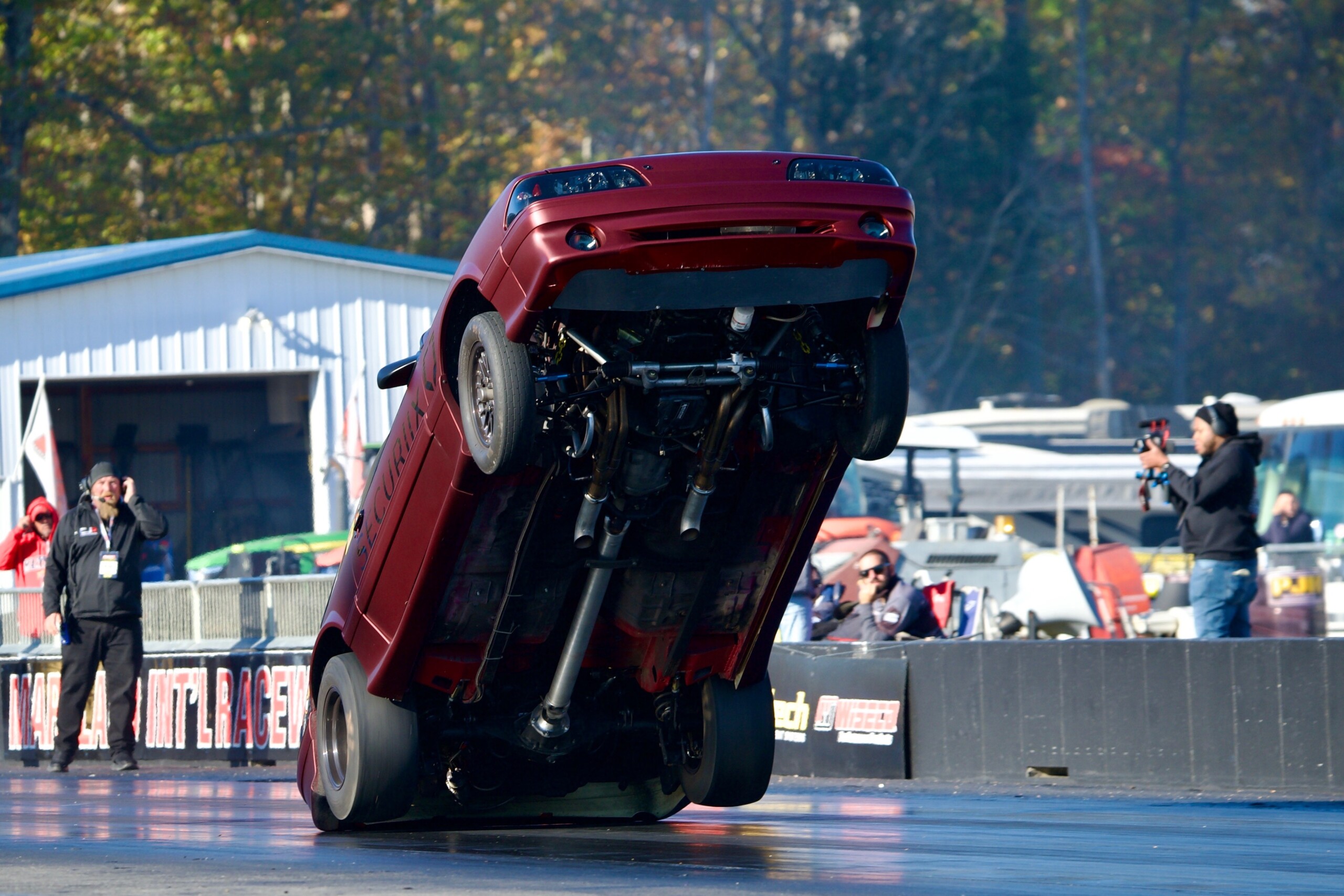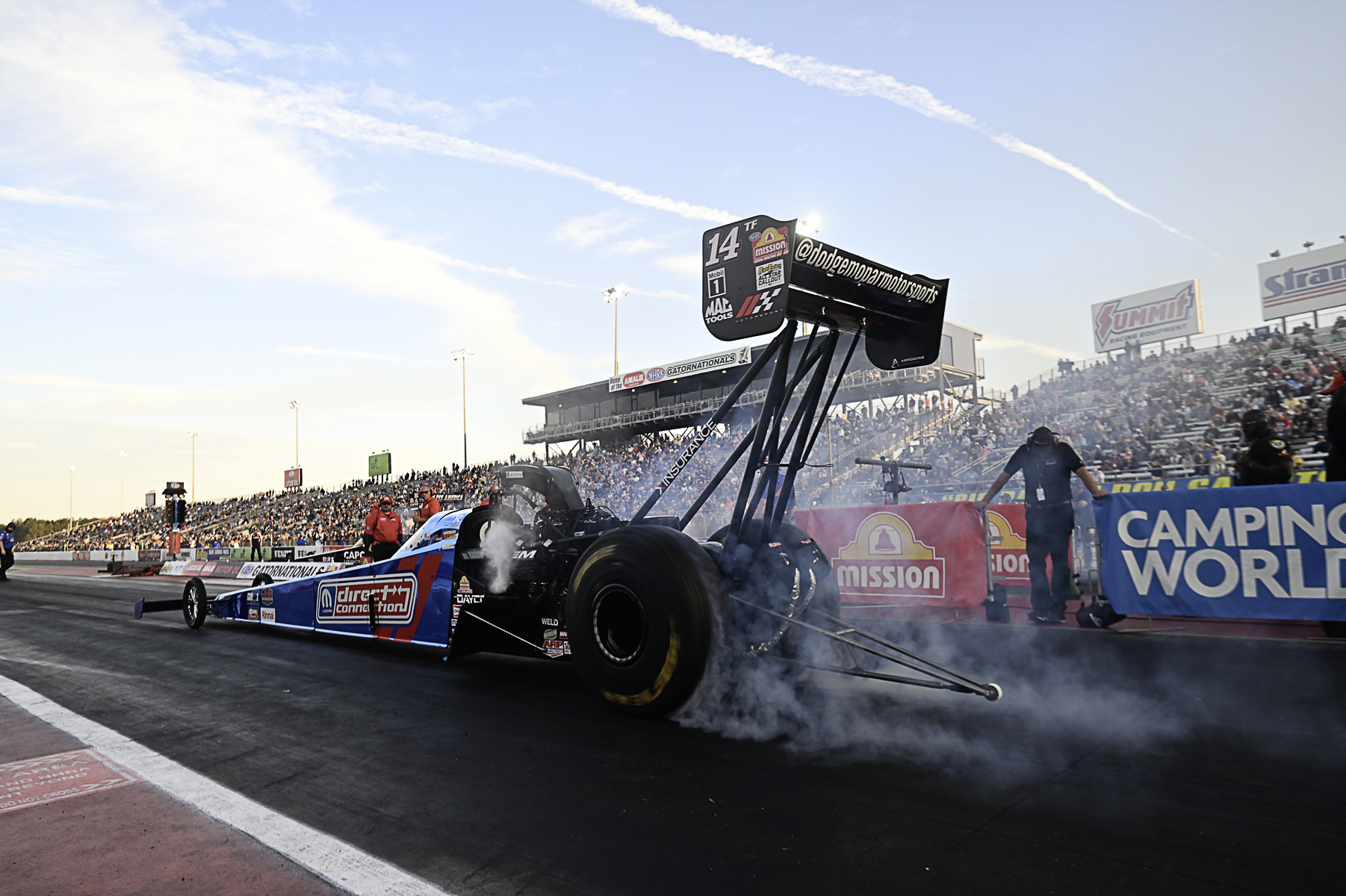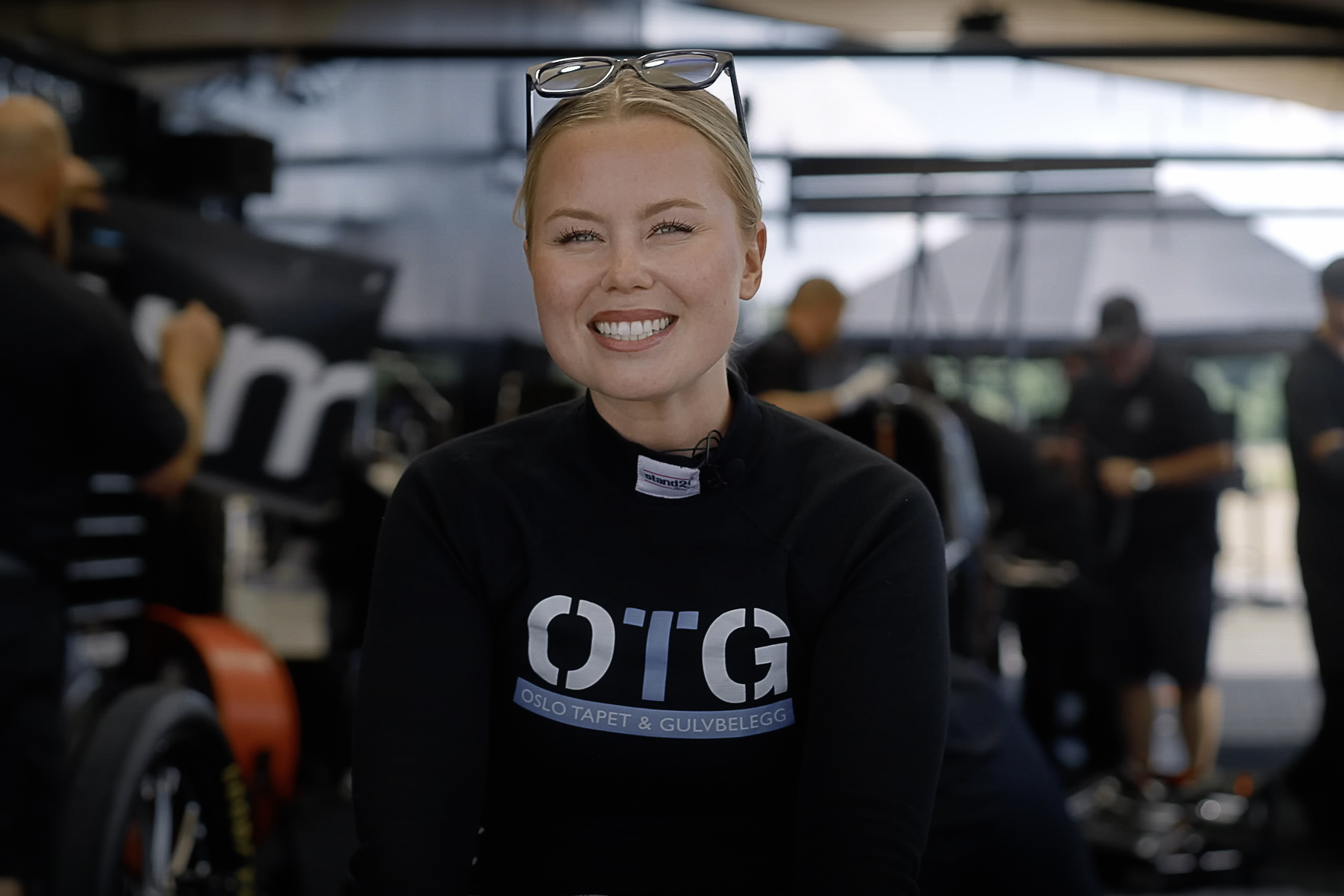Drag racing is a competitive sport, but it goes beyond wins and losses when you really look at what goes on at the track each week. For many racers, their racetrack friends are essentially family, as they share a tight bond and plenty of good times. Tennessee native Billy Copeland Jr., enjoys all the core aspects of drag racing, and his home-built, nitrous-assisted 1972 Dodge Demon is his way to get his racing fix in.
Growing up as a kid, Billy spent a lot of time with his family at the track and in the garage. His father was always tinkering with some type of old musclecar or building a hot rod, and that time spent in the garage helped Billy begin to naturally gravitate toward anything car and racing related.
Out of the time spent around cars as a kid, there was one particular thing that really pushed Billy toward a life that racing played an important role in.
“I would say the defining moment that got me into cars with dad had to be just being with him and working on everything. I started out by just handing him tools, learning wrench sizes, and what the different tools were. Eventually, he let me start working on the cars with him, and it really evolved from all of that. It’s those types of experiences that got the juices flowing for me,” Billy explains.
Besides spending time in the garage as a kid and turning wrenches with his dad, Billy went to the track with him, as well. Going to the track at such a young age and getting that experience helped to further plant the seeds of racing in Billy’s mind. He was obsessed with anything mechanical and wanted to keep feeding this newfound joy a steady diet of horsepower.
After all those years of assisting his dad, Billy finally reached the age to obtain his license and start tearing up the streets on his own. He started out like many teenagers do, racing on the streets, but soon realized that wasn’t the best of ideas.
Since he had spent a large amount of time hot rodding his own cars to make them quicker and faster, the drag strip was a natural place for him to turn so that he could race safely. “For me, going to the track was fun because I would get to see what the changes I made actually did, and the track was a perfect place to see those results. It was all about seeing what I could accomplish by improving the car and going faster each time I hit the track,” Billy explains.
Billy’s exposure to racing was part of his childhood and where he really learned everything he knows about racing. The values and lessons he learned at the track with his family helped mold his views about racing.
“Growing up, we weren’t a wealthy family; we worked for everything we had. Bracket racing is pretty well what we did and how I got into racing since it was affordable. That’s where I really learned the craft of drag racing. I’ve won a few races here and there bracket racing. I’m not a big-time racer, but I have a few trophies to show for my work. It’s not about the winning or the money because that takes the fun out of it for me,” Billy says.
Spending time at the track is one of the things that Billy really enjoys most and has become an important part of his life; and that won’t be changing anytime soon if he can help it. “One of the things I love the most about racing is being with my family; it’s a huge part of racing for me. My daughter races, too, so we travel all over in the motorhome to different races together. She also crews on my car when we go to the track, so it really is all about spending time together for us. If I had to go to the track by myself and not talk with anybody, there just wouldn’t be much fun in it for me,” Billy shares.
Another thing that he appreciates about drag racing is the friendships he’s forged over the years at the track. “You go to the track, you make friends, and you race against all of them at different tracks. I really enjoy the core of the sport because, to me, racing is all about friends, family, the addictive speed, and having a good time at the track,” Billy says.
But don’t think for one second that Billy doesn’t enjoy the other challenges that drag racing can present when racing a heads-up car.
“The competition side of racing makes going to the track for me a blast. I like it because you have to work hard to do well and try to reach the top. It gets interesting with these small-tire cars when you’re trying to throw a ton of power at them to get down the track,” Billy remarks.
When Billy first began looking to build a car, he had his sights set on a class A or E-body, since the Challenger is his favorite model of Mopar machine. While searching, he came across the Demon and decided it would fit the bill for what he was doing. “I found this car in Kentucky and the price was right. I actually bought it to be a more of a street car, but then I got the wild urge to do this heads-up racing stuff, so I went that route with it,” Billy explains.
With his new project in hand, he got to work creating the car he would want to pilot down the track. This wasn’t a shop build by any stretch — he spent four years building this car almost entirely by himself. “I built the motor myself, took care of the wiring, and even did all of the prep work before it got painted. I’m most proud of the fact that I did most of the work on the car myself,” Billy says of the build.
Billy is a true Mopar man, so he made sure his Demon was filled with as many Mopar parts as possible, starting with the engine. Under the hood is a 498 cubic inch Dodge block with a 4.375-inch bore and 4.150-inch stroke. For a rotating assembly, he opted to use a Callies crankshaft, Bill Miller Engineering connecting rods, and Wisco pistons. Keeping the motor lubricated is a Milodon oil pump that gets its liquid from a Moroso oil pan filled with a windage tray and girdle.
For cylinder heads, Billy used a pair of aluminum Brodix B1 heads from Koffel’s. The heads have been outfitted with 1.7 ratio rocker arms from T&D, 2.30-inch intake, and 1.81-inch exhaust valves help move air around the combustion chamber. A camshaft from Bullet Racing Cams rounds out the top end of this stout Mopar mill.
Bringing all of the air into the motor is a B1 intake manifold and CFM brand carburetor. To feed all of the race gas into the engine is a Magnafuel 500 electric fuel pump, while a Magnafuel regulator helps keep the fuel pressure where it needs to be. Providing the ignition for the motor is an MSD 7531 box, MSD coil, and MSD billet distributor. Billy tunes the motor himself with assistance from Coy Templeton.
To run in the NMCA’s Xtreme Street class, you need to be packing a pretty solid power-adder combination if you want to make the field, and Billy elected to feed his Mopar a healthy dose of nitrous oxide on race day. He’s using an NOS single stage fogger kit with the class legal .028-inch jet. He’s still working on sorting the car out, but has been able to run a best elapsed time of 5.30 in the 1/8-mile at 130 mph, with a very respectable 1.20 60-foot time.
One of the only non-Mopar things in Billy’s Demon is the transmission. An ATI Powerglide built by Jimmy Pritchett got the nod to head up the driveline. Transferring the power to the transmission is a 4,000 stall ATI converter. Billy changes the gears going down the track via an Aerospace Components shifter.
The stock rearend would be no match for the level of power Billy is throwing down, so he decided to upgrade to a Dana 60 unit from Moser. Inside the beefy rear is a set of 4.10 gears, Moser axles, and a Moser spool. The rearend gets its power from a stout three-inch steel driveshaft.
The suspension of the Demon uses a full set of upper and lower control arms from Control Freak Suspension. To assist with the dampening duties, AFCO shocks and springs were used at all four corners. “With this suspension setup, the car just drives so smooth and straight. It lets me just go wide open and not worry,” Billy says.
Inside the car, Billy is strapped into the 25.4 certified roll cage with a set of G-Force seat belts. He kept the interior simple and clean, covering it with a nice black racing carpet. To monitor the Demon’s vitals as he goes down the track, he uses a mixture of Autometer and AEM gauges.
Realizing that a racecar is never really a project that has an end, Billy is getting ready for the 2017 season with some big improvements in mind. “Over the winter, I’m working on taking 300 pounds out of the car with fiberglass doors, front clip, and trunk lid. I hated to do that, and would rather keep it all steel, but when you’re 300 pounds overweight, it’s hard to compete with the really fast cars in the class,” he explains.
Billy has been able to fold everything he enjoys about drag racing right into his Dodge Demon. He can spend time at the track with his family and friends while having fun making laps in his hot rod, and he represents everything that makes drag racing great and keeps family traditions alive in the sport today.




